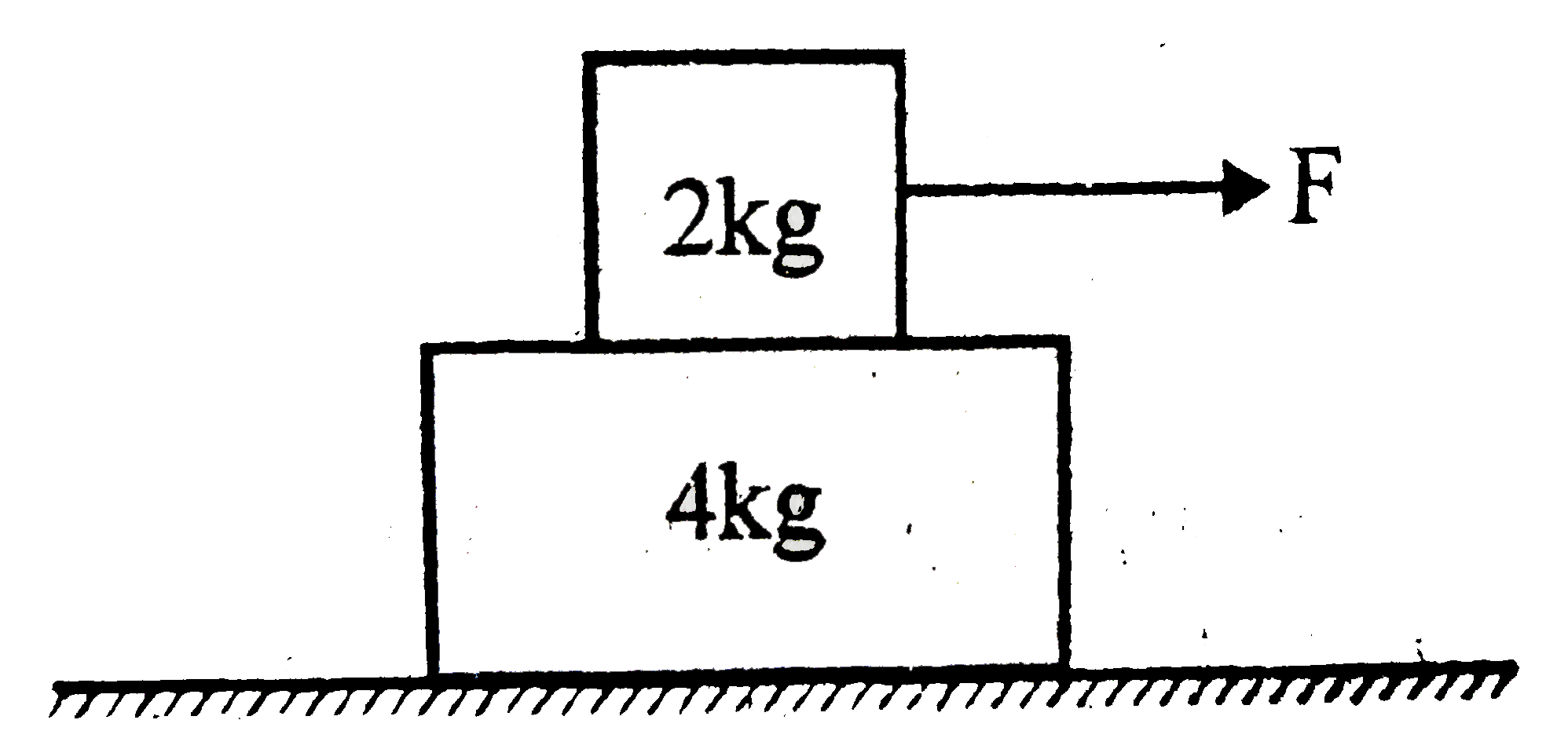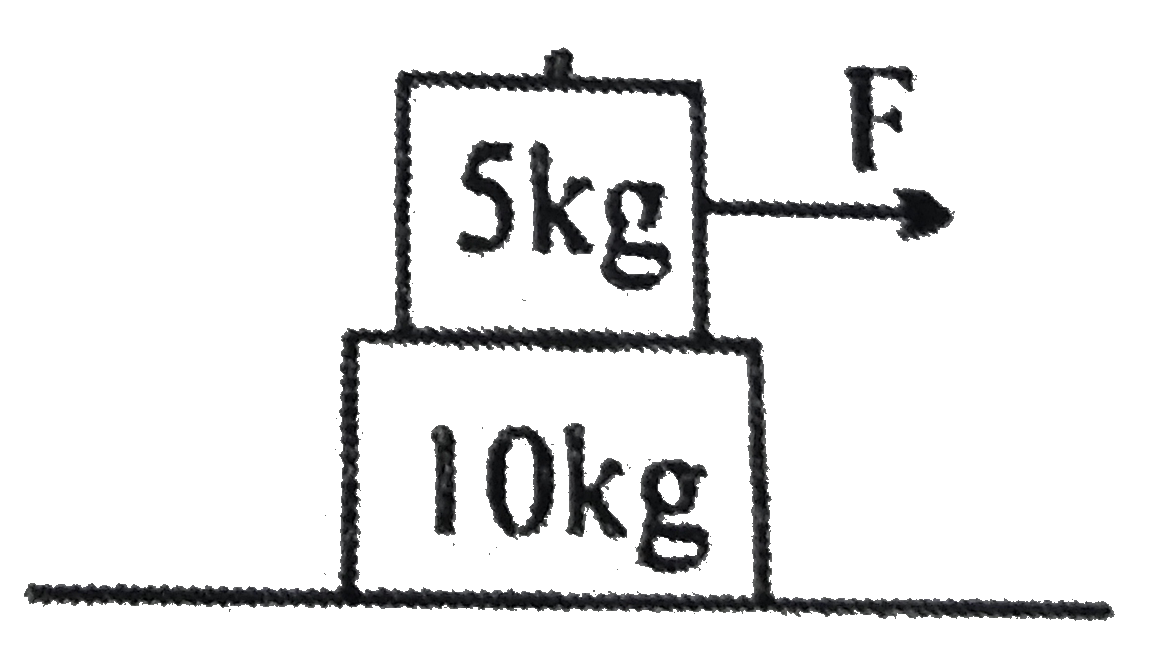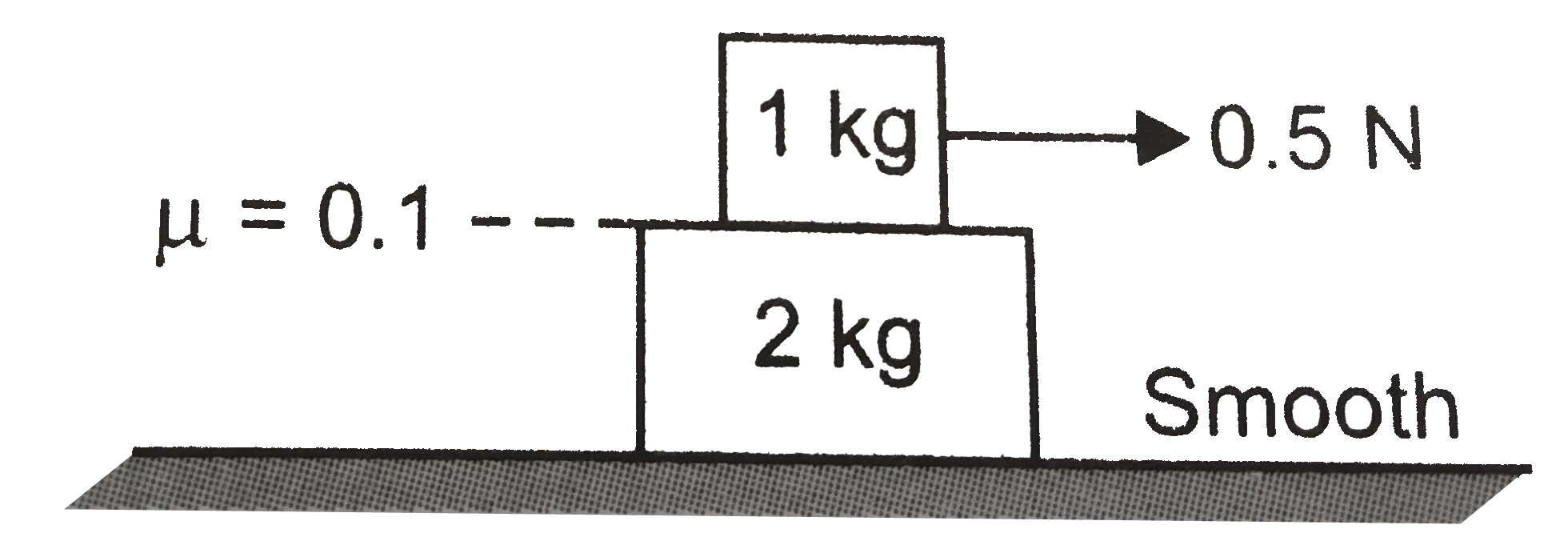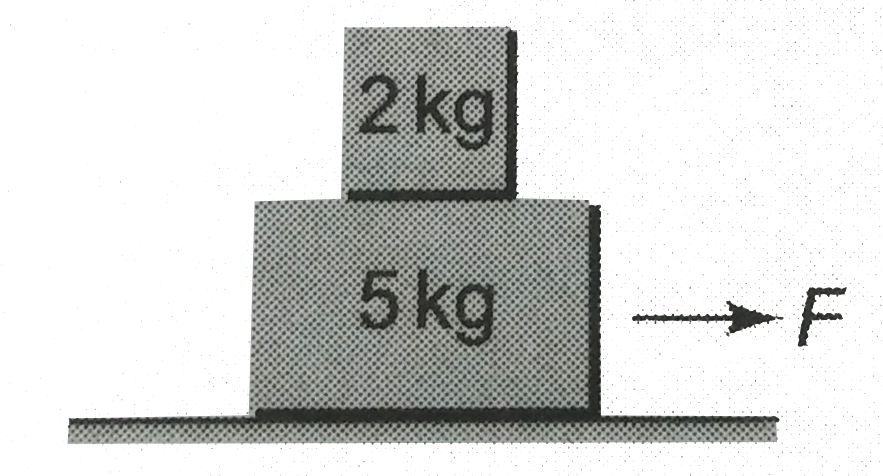(a) Friction coefficient between blocks is 0.5 and between ground and 10 kg block is 0.2. Find acceleration of blocks if force F = 40 N is applied on 5 kg block as shown in Fig. 6-21a.

Figure 6-21 (a) Two blocks kept one over the other and force of 40 N applied on the upper block.
First, we find the values of limiting friction at all contact surfaces (fs,max) (Fig. 6-21b).

Calculation: The only driving force that the block B can experience is the one applied by the lower surface of block A on block B.
The maximum value of this force is 25 N. This is lower than the minimum force required to move with respect to ground. Hence only the block A will move as shown in Fig. 6-21c.

(b) Friction coefficient between the blocks is 0.5 and ground is smooth, if force of 30 N is applied on the upper block as shown. Find accelerations of the blocks (Fig. 6-22a).
Topper's Solved these Questions
- BOOK - RESNICK AND HALLIDAYCHAPTER - FORCE AND MOTION-IIEXERCISE - CHECKPOINTS5videos
FORCE AND MOTION-II
- BOOK - RESNICK AND HALLIDAYCHAPTER - FORCE AND MOTION-IIEXERCISE - PROBLEMS33videos
FORCE AND MOTION-II
- BOOK - RESNICK AND HALLIDAYCHAPTER - FORCE AND MOTION - I EXERCISE - PRACTICE QUESTIONS (Integer Type)3videos
FORCE AND MOTION - I
- BOOK - RESNICK AND HALLIDAYCHAPTER - GAUSS' LAW EXERCISE - PRACTICE QUESTIONS (INTEGER TYPE)3videos
GAUSS' LAW
Similar Questions
Knowledge Check
- Question 1 - Select One
A system of two blocks is shown in figure. Friction coefficient between 5 kg and 10 kg block is μ=0.6 and between 10 kg and ground is μ=0.4 What will be the maximum value of force F applied at the lower block so that 5 kg block does not slip w.r.t. 10 kg . (g=10m/sec2). The force applied at the upper block is having fixed magnitude of 80 N (both forces start to act simultaneously)
 A160 NB250 NC210 ND310 N
A160 NB250 NC210 ND310 N - Question 2 - Select One
Consider the shown arrangement. The coefficient of friction between the two blocks is 0.5 . There is no friction between the 4 kg block and of 12 N is applied on the 2 kg block as shown in the figure, the acceleration of the 4 kg block would be
 A2.5m/s2B2m/s2C5m/s2DNone
A2.5m/s2B2m/s2C5m/s2DNone - Question 3 - Select One
If the mass of block is 1 kg and a force of 10 / √3 N is applied horizontally on the block as shown in the figure . The frictional force acting on the block is :
 AzeroB10√3NC20√3ND5 N
AzeroB10√3NC20√3ND5 N
Coefficient of friction between 5kg and 10 kg block is 0.5 and that between floor and 10 kg block is 0.8 if friction between floor and 10 kg block is 20 N what is the value of force (in N) being applied on 5 kg
 View Solution
View SolutionCoefficient of friction between 5kg and 10 kg block is 0.5 and that between floor and 10 kg block is 0.8 if friction between floor and 10 kg block is 20 N what is the value of force (in N) being applied on 5 kg
 View Solution
View SolutionA block of mass m = 2kg is accelerating by a force F = 20N applied on a smooth light pulley as shown in the figure. If the coefficient of kinetic friction between the block and the surface is μ=0.3, find its acceleration.
 View Solution
View SolutionA 10 kg block kept on an inclined plane is pulled by a string applying 200 N force. A 10 N force is also applied on 10 kg block as shown in figure. Find :
acceleration of 10 kg block.View SolutionTwo blocks of masses 2 kg and 4kg are connected through a massless inextensible string. The co-efficient of fricition between 2kg block and ground is 0.4 and the coefficient of friction between 4kg block and ground is 0.6. The forces F1=10N and F2=20N are applied on the blocks as shown in the figure. Calculate the frictional force between 4 kg block and ground (Assume initially the tension in the string was just before forces F1 and F2 wer applied).
 View Solution
View Solution



